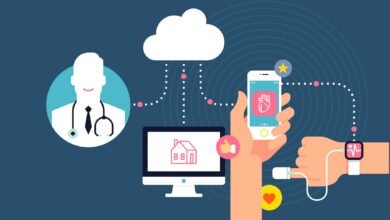IoT’s Impact on Financial inclusion for All

In today’s digital age, the Internet of Things (IoT) stands as a transformative force, reshaping various aspects of our lives, including access to financial services. As societies strive for greater financial inclusion, IoT technologies offer unprecedented opportunities to bridge gaps and reach underserved populations. With its ability to connect devices and gather real-time data, IoT holds the potential to revolutionize the way financial services are delivered, ensuring accessibility for all individuals, regardless of their location or socioeconomic status.
The intersection of IoT and financial inclusion heralds a new era of innovation and accessibility in banking, payments, and other financial services. By leveraging IoT devices such as smartphones, wearables, and connected sensors, financial institutions can extend their reach to remote areas, enabling individuals to participate in the formal economy. Moreover, IoT-powered solutions facilitate the delivery of tailored financial products and services, addressing the diverse needs of underserved communities and promoting inclusive economic growth.
Iots Impact on Financial inclusion for All
Financial Inclusion: Understanding the Concept
Financial inclusion entails ensuring that individuals and businesses have access to affordable and appropriate financial products and services. It encompasses activities such as banking, savings, credit, and insurance, allowing people to participate in the formal financial system.
IoT’s Role in Enhancing Financial Inclusion
Access to Banking Services
IoT facilitates the expansion of banking services to underserved and remote areas by enabling the deployment of mobile banking solutions and digital payment platforms. Through IoT-powered devices like smartphones and biometric scanners, individuals can access banking services without the need for physical branches.
Improving Payment Systems
IoT technologies, such as contactless payment devices and near-field communication (NFC) technology, have revolutionized payment systems, making transactions faster, more convenient, and secure. This has particularly benefited individuals in rural areas and developing regions, where traditional banking infrastructure is limited.
Enhancing Data Collection and Analysis
IoT devices generate vast amounts of data that can be leveraged by financial institutions and policymakers to gain insights into consumer behavior, market trends, and risk assessment. This data-driven approach enables more accurate decision-making and targeted interventions to promote financial inclusion.
Case Studies: Real-world Examples
Several initiatives around the globe are leveraging IoT to promote financial inclusion. For instance, in India, the government’s Aadhaar-enabled Payment System (AEPS) uses biometric authentication through IoT devices to facilitate financial transactions for rural populations.
Challenges and Concerns
Security and Privacy Risks
One of the foremost challenges facing the widespread adoption of IoT in financial inclusion efforts is the heightened risk of security breaches and privacy violations. IoT devices are vulnerable to cyberattacks, hacking, and data breaches, which can compromise sensitive financial information and undermine consumer trust. Addressing these security concerns requires robust encryption protocols, authentication mechanisms, and cybersecurity measures to safeguard against potential threats.
Affordability and Accessibility
Despite the potential benefits of IoT in promoting financial inclusion, affordability and accessibility remain significant barriers, particularly in low-income and underserved communities. The cost of IoT devices and services may be prohibitive for individuals with limited financial resources, hindering their ability to access and utilize IoT-powered financial solutions. Moreover, disparities in internet connectivity and infrastructure can further exacerbate the digital divide, excluding marginalized populations from participating in the digital economy.
Regulatory Challenges
The rapid proliferation of IoT technology in financial services poses regulatory challenges for policymakers and regulatory authorities. Ensuring compliance with existing regulations while adapting to the evolving landscape of IoT requires clear guidelines and standards for data protection, consumer privacy, and cybersecurity. Striking the right balance between innovation and regulation is crucial to fostering a safe and conducive environment for IoT-driven financial inclusion initiatives.
Data Governance and Ethics
IoT generates vast amounts of data that raise concerns regarding governance, ownership, and ethical use. Financial institutions must navigate complex data governance frameworks to ensure transparency, accountability, and consent in data collection, processing, and sharing practices. Moreover, ethical considerations, such as the responsible use of consumer data and protection of individual privacy rights, are paramount in mitigating potential risks and fostering trust in IoT-powered financial services.
Digital Literacy and Skills Gap
Promoting financial inclusion through IoT requires not only access to technology but also digital literacy and skills development among end-users. Many individuals, particularly in rural and marginalized communities, may lack the necessary knowledge and skills to effectively utilize IoT devices and navigate digital financial services. Addressing the digital literacy gap through education, training, and awareness programs is essential to ensuring that all individuals can fully participate in the digital economy.
Future Outlook: Potential Impact and Growth
Expansion of Access
One of the most significant aspects of IoT’s future impact on financial inclusion lies in its potential to expand access to financial services. As IoT technology becomes more ubiquitous and affordable, it can reach even the most remote and underserved populations, enabling them to participate in the formal financial economy. This expansion of access can lead to greater financial empowerment and inclusion for individuals and communities worldwide.
Enhanced Efficiency and Convenience
With the continued integration of IoT devices and sensors into financial systems, the efficiency and convenience of financial services are expected to improve significantly. IoT-enabled devices can streamline processes such as account management, payments, and transactions, reducing the time and effort required for financial activities. This increased efficiency can benefit both consumers and financial institutions, leading to smoother and more accessible financial experiences for all.
Innovation in Product Development
The adoption of IoT in financial services is likely to spur innovation in product development, leading to the creation of new and tailored financial solutions. IoT data can provide insights into consumer behavior and preferences, allowing financial institutions to design products that better meet the needs of diverse populations. For example, IoT-enabled devices can enable personalized financial advice and automated savings solutions, catering to individual financial goals and lifestyles.
Advancements in Risk Management
IoT’s ability to collect and analyze vast amounts of data in real-time can revolutionize risk management practices within the financial industry. By leveraging IoT data for predictive analytics and risk modeling, financial institutions can better assess and mitigate risks associated with lending, investments, and fraud. This proactive approach to risk management can enhance the stability and resilience of financial systems, benefiting both consumers and the broader economy.
Empowerment of Emerging Markets
In emerging markets where traditional banking infrastructure is limited, IoT has the potential to play a transformative role in promoting financial inclusion. By leveraging IoT technologies such as mobile banking and digital payment platforms, emerging economies can leapfrog traditional banking systems, enabling rapid adoption of financial services. This empowerment of emerging markets can drive economic growth, reduce poverty, and foster greater global connectivity and collaboration.
Read More: The Economics of Smart Cities: Investing in a Sustainable Urban Future
Conclusion
The effect of IoT on economic inclusion for all is plain. Through its innovative packages and solutions, IoT has the potential to break down barriers and empower individuals and communities international. By facilitating get right of entry to to banking offerings, improving payment systems, and allowing records-driven selection-making, IoT contributes extensively to increasing economic inclusion and fostering monetary boom.
However, demanding situations inclusive of safety worries and affordability should be addressed to make sure that the blessings of IoT attain all people equitably. As generation maintains to evolve and connectivity turns into extra pervasive, embracing IoT as a device for monetary inclusion can be essential in growing a greater inclusive and rich future for all.
FAQs
What is financial inclusion, and why is it important?
Financial inclusion aims to provide access to affordable and appropriate financial services for all individuals and businesses, thereby promoting economic development and reducing poverty.
How does IoT contribute to financial inclusion?
IoT facilitates the expansion of banking services, improves payment systems, and enables data-driven decision-making, thereby increasing access to financial services for underserved populations.
What are some examples of IoT applications in financial inclusion?
Examples include mobile banking solutions, contactless payment devices, and biometric authentication systems that enable individuals to access financial services remotely and securely.
What are the main challenges facing IoT adoption in financial inclusion initiatives?
Security and privacy concerns, affordability of IoT devices and services, and the need for infrastructure development are among the key challenges facing IoT adoption in financial inclusion efforts.
What is the future outlook for IoT in financial inclusion?
With ongoing technological advancements and increasing global connectivity, IoT has the potential to further expand financial inclusion efforts, reaching even the most remote and marginalized communities.











